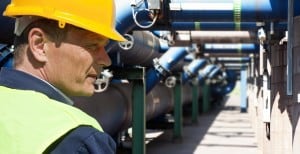Key variables inhibiting asset performance

The market is currently saturated with products and services promoted as the perfect solution to your asset management and maintenance problems. However, what if you didn’t need a solution because you took early action to prevent minor issues becoming big problems? Identifying the variables that can hinder the reliability and performance of assets is the first step in achieving this. Here are the 5 key variables you need to know about.
The wrong maintenance programme
In some sectors, reactive maintenance – whereby assets are run until failure – is still the main maintenance programme in use. However, high costs accrued during unplanned equipment downtime and the potential risks to safety mean this is far from the best option. Instead, we recommend implementing a programme of predictive maintenance. A well-run predictive maintenance programme determines the condition of equipment through techniques such as vibration monitoring. The data gathered can be used to effectively plan and schedule maintenance when needed – helping assets run in optimum condition and for as long as possible.
Conflicting priorities: production vs. maintenance
Considering the highly competitive nature of manufacturing at present it’s no surprise that there is an emphasis on production. However, failing to take the time required to look after your machinery hinders reliability and could be catastrophic for performance and productivity in the long run. Finding a healthy balance between production and conducting maintenance is critical.
Inexperienced or semi-qualified maintenance engineers
Manufacturing environments are busy and complex and are always one component failure away from expensive production downtime. That’s why it’s vital that those in charge of operations and maintenance have the experience, qualifications and knowledge required to oversee correct machine installation, servicing, maintenance and repairs.
Failing to correct problems
It’s not uncommon for machinery to regularly experience the same problems. The reason for this is that the appropriate attention isn’t given to the root cause. Simply replacing a worn part or contaminated lubricant isn’t enough; instead, the reason for the problem should be established and appropriate action should be taken to prevent its reoccurrence in the future.
Incorrectly specifying parts
Just because a part comes as standard doesn’t mean it is the best part for your system. And just because a part doesn’t come as standard doesn’t mean it isn’t required. Vibration sensors are proof of this. Vibration sensors provide an early warning of potential faults and deliver data on operating status, allowing maintenance to be proactive and planned. They are an essential part of any effective maintenance programme, even if they don’t come as standard.
